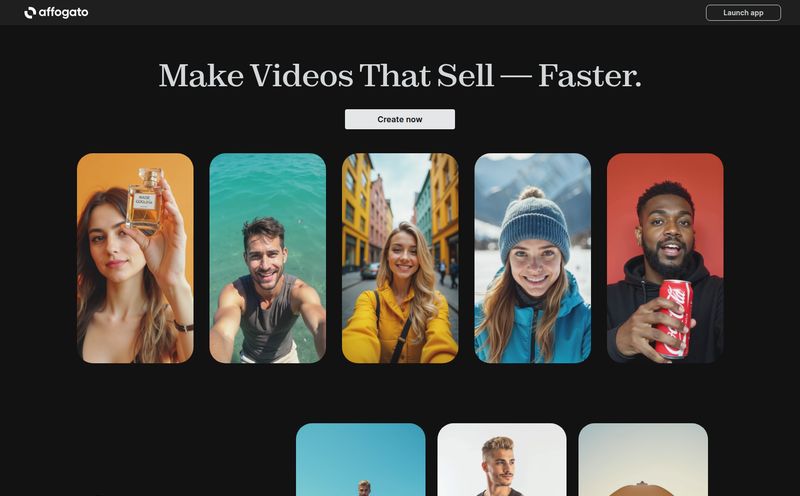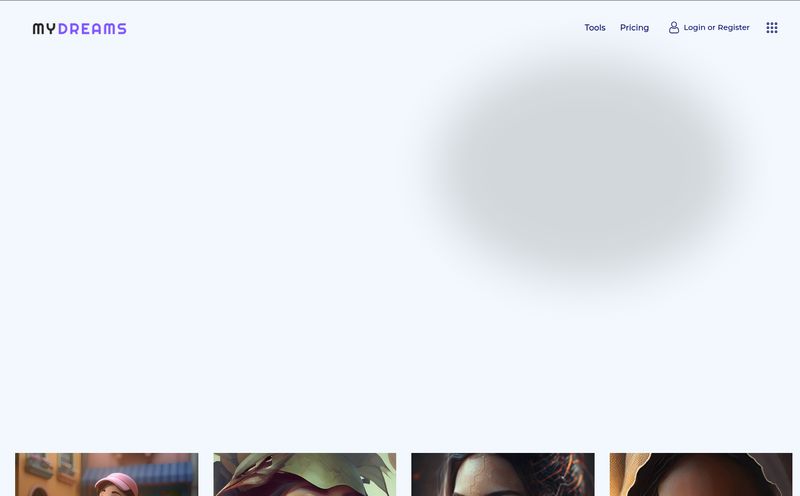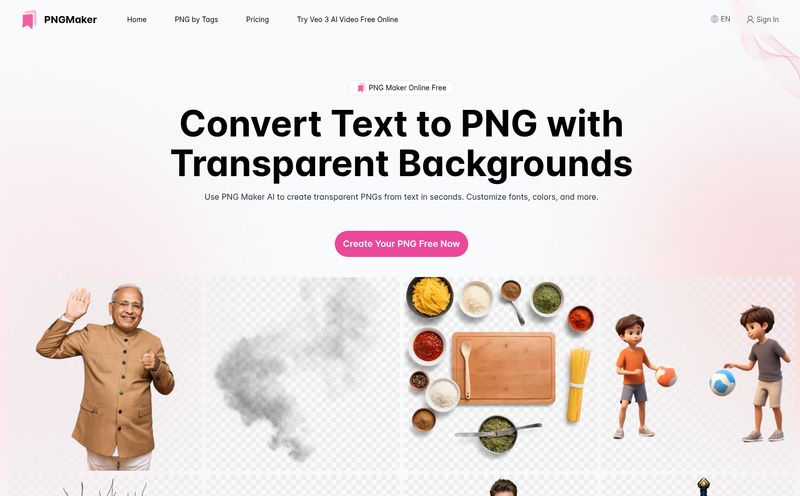I’ve been in the digital marketing and SEO game for a while now. Long enough to see trends come, go, and then bizarrely come back again (hello, Y2K aesthetics). But the recent explosion of AI tools into every single niche is something else entirely. It feels like every morning I wake up to a new AI that promises to write my emails, plan my vacation, or, in this case, design an entire clothing line.
So, when ClothingAI floated across my screen, my inner skeptic and my inner tech nerd had a little meeting. The pitch is seductive, isn't it? An AI fashion designer that can whip up unique, on-brand designs, prints, and even detailed embroidery concepts. For any small business owner, startup fashion label, or print-on-demand mogul, that sounds like finding a golden ticket.
But we’ve been burned by shiny objects before. Let’s get past the marketing copy and talk about what this thing actually is, and whether it’s a game-changer or just another gadget.
So What Is ClothingAI, Really?
At its heart, ClothingAI positions itself as more than just a pattern generator. It’s an “AI fashion designer.” The goal is to take your brand's identity, maybe a mood board image or a simple text prompt, and spit out ready-to-mockup designs for tops and bottoms. We're talking everything from the cut of the garment to intricate graphic elements.
Think of it as a hyper-caffeinated design intern who never sleeps, never asks for a raise, and can generate a hundred ideas before you’ve finished your first cup of coffee. The platform claims it can craft everything tailored specifically for your label, creating a “seamless blend of innovation and style.” Big words. Let's see how it works.

Visit Clothing AI
How Does This AI Design Magic Happen?
From what I've gathered, the process is pretty straightforward, which is a huge plus. You don’t need a degree from Parsons to get started. The interface seems to revolve around a few core inputs.
From a Vague Idea to a Virtual Garment
The core mechanic, like many generative AI tools today, seems to be prompt-based. You feed the machine your ideas. This can be through text, but the really interesting part is its ability to use an image-based input. You could theoretically upload a picture of a sunset, a piece of abstract art, or a vintage fabric swatch and ask the AI to build a collection around that vibe. This is a step up from just typing “create a cool t-shirt design.”
Beyond the Print: Getting into Detail
Here’s what caught my eye. ClothingAI isn’t just about slapping a generated image on a stock t-shirt photo. It specifically mentions customization for prints, embroidery, and puffs. Anyone who’s ever dealt with apparel production knows these are entirely different beasts. Designing for embroidery requires thinking about thread count, texture, and layering. Puff prints have their own set of rules. If the AI can genuinely generate viable, production-ready concepts for these different mediums, that’s definately a powerful tool for ideation.
The Good, The Bad, and The AI
Alright, let’s get down to brass tacks. No tool is perfect, especially not in the wild west of modern AI. Based on its features and the typical landscape of these tools, here’s my breakdown.
The Advantages I'm Seeing
First off, the speed is undeniable. The ability to generate dozens of mockups in a day is something that would traditionally cost a fortune and take weeks with a human design team. For a startup trying to find its visual identity or a larger brand wanting to test a new concept for a social media campaign, this is huge. It dramatically lowers the barrier to entry.
It’s also a fantastic cure for creative block. We’ve all been there, staring at a blank canvas. Using a tool like ClothingAI to generate a few dozen starting points could be the spark you need. You don't have to use the final design as-is; it can be a launchpad for a human designer’s creativity.
The Potential Drawbacks and My Skepticism
Now for the other side of the coin. The biggest concern is always the loss of that human touch—the soul of a design. The cons list this perfectly: relying too much on AI can limit creative control. An AI doesn’t have lived experiences, it hasn’t felt the fabric, it doesn't understand the cultural context behind a style the way a person does. It’s pulling from a dataset. A massive, impressive dataset, but a dataset nonetheless.
There's also the risk of your designs looking… well, a bit generic. If everyone is using similar AI tools with similar prompts (“edgy streetwear design with skulls and roses”), we could enter an era of bland, algorithm-approved fashion. The quality of the output is entirely dependent on the quality of the input. Garbage in, garbage out, as they say.
The Big Question: What's the Price Tag?
And now, for the part of the review where I usually break down the pricing tiers. Except, I can't. As of writing this, the pricing information for ClothingAI is nowhere to be found. The pricing page URL seems to be missing, and when I tried to click the “Billing” button on the homepage, I was met with a classic “404 Not Found” error.
What does this mean? It could be a few things. The platform might be so new that they haven't finalized their pricing model. It could be in a closed beta, available only to a select group of early adopters. Or it might be targeting enterprise-level clients with custom quotes. Whatever the reason, the lack of transparent pricing is a hurdle. It makes it tough to gauge whether this is an accessible tool for the solo entrepreneur or something aimed at bigger players.
Who Should Be Using ClothingAI?
Even without a price, we can figure out who stands to benefit the most from this technology.
I see a few perfect fits. First, print-on-demand (POD) sellers. If your business model is about volume and reacting to trends quickly, this tool could be your new best friend. It allows you to generate and test hundreds of designs on platforms like Printify or Printful without any upfront design cost.
Second, fashion startups and small brands in their initial stages. Instead of hiring a freelance designer for thousands of dollars to create a first collection, you can use ClothingAI to develop a strong visual direction and a portfolio of concepts to show investors or manufacturers.
Finally, I think established brands could use this for internal mood boards and rapid prototyping. Before dedicating serious resources to a new line, their design teams could use the AI to explore fringe ideas quickly and cheaply.
Who is it NOT for? High-fashion, couture brands built on the unique vision of a single designer. This tool won't replace the genius of an Alexander McQueen or a Rei Kawakubo. It's a tool for democratization and speed, not necessarily for groundbreaking artistry.
My Final Thoughts
So, is ClothingAI the future of fashion? Maybe a part of it. I don’t believe it will replace talented human designers. Instead, I see it as a powerful collaborator. It’s a way to break through creative ruts, accelerate the ideation process, and make design more accessible to everyone.
The real magic, though, will come from the creatives who learn how to master these tools—the people who can write the perfect prompt, who know how to take a 90% good AI design and add that final 10% of human genius to make it truly special. The tool itself is impressive, but a tool is only as good as the person wielding it. For now, I'm cautiously optimistic and very curious to see where it goes once that 404 page gets sorted out.
Frequently Asked Questions
What is ClothingAI?
ClothingAI is an artificial intelligence platform designed to generate unique clothing designs. It can create concepts for garments, prints, embroidery, and puff prints based on user inputs like text prompts or reference images.
How does ClothingAI work?
It uses generative AI to interpret your creative direction. You provide a prompt or an image, and the AI produces original design mockups for various types of apparel, such as tops and bottoms, tailored to your brand's aesthetic.
Can ClothingAI replace a human fashion designer?
Not entirely. While it's a powerful tool for generating ideas, mockups, and overcoming creative blocks, it lacks the lived experience, cultural understanding, and nuanced touch of a professional human designer. It's best seen as a design assistant or a tool for rapid ideation.
Who is the ideal user for ClothingAI?
It's great for print-on-demand (POD) business owners, fashion startups, small brands that need to generate a lot of design ideas quickly, and marketing teams looking to create concepts for campaigns.
Is ClothingAI free to use?
As of now, the pricing information isn't publicly available. The platform might be in a beta phase or operating on a custom quote basis for businesses. You'll have to check their site for the most current information.
What are the main limitations?
The quality of the designs heavily depends on the quality of your input prompts. There's also a risk of generating designs that may feel generic or lack a unique, personal touch if not guided carefully.
Reference and Sources
For more information, you can attempt to visit the official website, though some pages may be under construction:
- ClothingAI Official Website: [A direct link to the platform's homepage would be placed here.]



